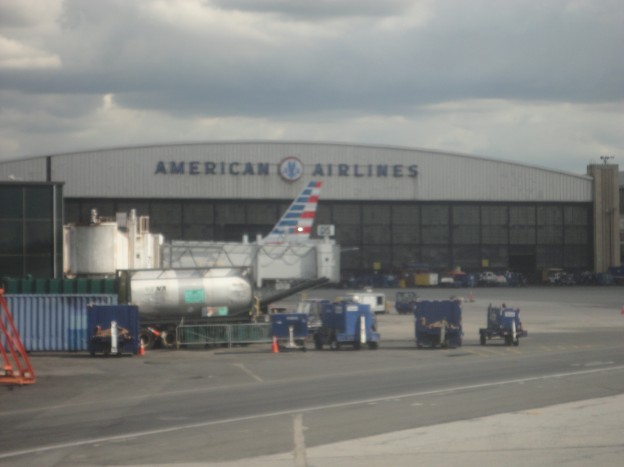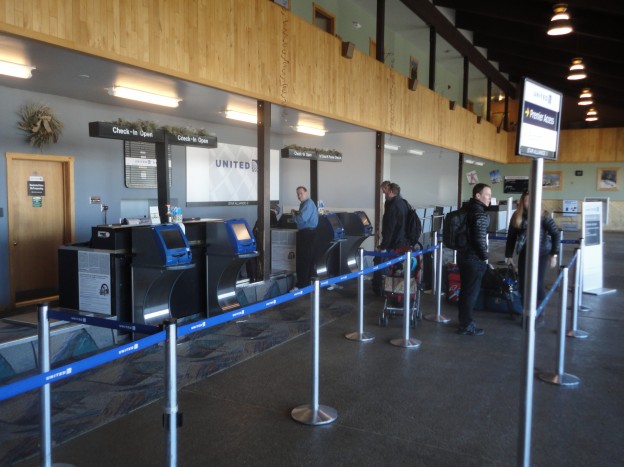Airline Passenger Targets don’t match Tourism Guest Targets
Airline Passenger Targets don’t match Tourism Guest Targets. Chuck Schubert vice-president of network planning at American Airlines alluded to a key 20%/70% airline rule about passengers and airline flight revenues in the recent: Airlines Reveal Ticket Pricing Strategies news article in the Silicon Valley Mercury News. When extrapolated out, this means 20% of the (Higher Fare Paying) passengers represent 70% of the flight revenues and that 80% of (Lower Fare Paying) airline passengers represent only 30% of flight revenues. The profit focused airline industry, understandably, prioritizes their focus on the higher fare and revenue producing 20% of their customers (70% of flight revenues), over the lower fare paying 80% of their customers. Many communities are tourism driven and wish to focus on maximizing passengers and not revenue as they see this would be the best way to fill-up their hotel rooms. This dichotomy clearly shows airline passenger targets don’t match tourism guest targets.
Leisure destinations and/or leisure organizations, that don’t fully understand the implications of this airline passenger targets approach will be unlikely to realize their air passenger guest capture potential.
I can’t emphasize enough that the 80% (Lower airfare paying air guest), which is the primary target air guest of many tourism and leisure business organizations, is very much a secondary priority airline passenger target.. The priority airline passenger targets represent only 20% of passengers. Leisure tourism and travel is a discretionary activity where potential air tourism guests are more price-point conscious and have a lower airfare price threshold (Then the 20% the airline passenger targets) at which point they will decide against making a flying trip due to high flight cost. With airlines primarily focusing on maximizing revenue and the capture of the “20%” passenger, airline passenger capture goals will often run counter to the tourism passenger capture efforts.

Airline Goals Don’t Match Tourism Goals
Fact 1: Airlines will set pricing to maximize revenue which often won’t maximize flight occupancy – Less than full occupancy flights limit tourism air guest capture possibilities
“While full planes are generally a good thing, it’s not necessarily a given that full planes are profitable planes,” American’s Schubert said. Like any business, airlines focus on being profitable and they will use strategies to meet that profit. This includes selling seats on the plane at variable prices that may cause the flight to go out less than 100% full if that combination of seat price sales produces the highest revenue; and leads to higher profits. “It’s something we hear all the time: ‘I was on a full flight so you must be making a lot of money.” said Bob Cortelyou, Delta’s senior vice president of network planning. “A lot of times it depends on what type of fares the passenger wants to pay.” Airline passenger targets don’t always match tourism air guest targets.
Example: An aircraft has 50 seats costing $20,000 round-trip to fly on a route Full-Flights do NOT always equal profitable flights and the airline passenger targets don’t match the tourism guest target
For a flight costing $20,000 per round-trip, the airline would need to receive an average of $400 per passenger in revenue at a 100% full flight to breakeven. If however, an airline can produce $25,000 in flight revenue through variable air price level sales that sell only 40 of those 50 seats (At let’s say prices that range from $300 to $1200), like any good business, they are going to execute on this sales model. This model offers a $5000 profit per flight. Why sell a full flight (50 seats) at breakeven when you can sell 40 seats on the same plane at a $5000 profit?
The key fact to remember is that historical market behaviors drive the airlines pricing strategies to maximize profit. These pricing strategies have airline passenger targets that are not as beneficial to tourism entities. When and if, a 100% full flight at the same fare situation will produce the highest profit, airlines will use this strategy. Typically, however, selecting to go with a 100% full at the same fare strategy, will NOT produce the most profit for the airlines (As determined by historical airline performance – And note that achieving 100% full is not likely regardless of pricing). The airlines will therefore, most often, choose to sell through variable airfare pricing levels to maximize profit and target a more achievable (Less than 100%) flight occupancy, based on that pricing strategy.

If, in the above $20,000 per round-trip cost situation, the airline were to sell-out all 50 seats but only at $400 per passenger, they’ve produced only $20,000 and have only broken even. If they sell all seats at only $350 they have just lost $2500 on the flight. In many of those instances, where Bob Cortelyou vice-president of network planning from Delta noted, “People assume full flights are profitable and are surprised when the flights are cancelled”, the airlines were likely not getting enough revenue on an average per passenger basis with enough passengers to meet profitability and this is why the flights were discontinued. Full-Flights do not always equal profitable flights. Airline passenger targets are different because this approach will typically not fill the flights.
More importantly, for communities and tourism organizations, discontinued flights mean less access to your community via airlines and less opportunity to capture the longer staying and higher spending visiting guest that can spend a great amount locally.
Fact 2: Unprofitable flights mean discontinued flights and even less tourism guest capture opportunities. Airline pricing to make maximum revenue sometimes equals less full flights and can mean a loss of tourism sales.
The airlines maximum flight revenue focus will often mean the last seats available on a flight are only available at high rates to attract the 20% airline passenger targets; which can mean in many instances, these go unsold. This is a condition very often present in heavy business dominant air markets but can also occur sometimes in leisure dominant air markets or mixed markets. Of course tourism organizations want flight profitability to also maximize the overall number of round-trip flights and seat sales sustained. They simultaneously, want more seats available at leisure air passenger “sellable prices” on each flight. Lower leisure “sellable prices” do not go after the airline passenger targets that drive higher flight profitability and so this approach is contradictory with the airline strategies.
What can tourism agencies do to align better with the airline passenger targets and maximize tourism guests and counter some of the airline limitations that come with the airlines “20%/70%” passenger revenue strategy.
1) Compete for and capture as many of the 80% passenger seats as possible! First, remember that inherent in the 20%/70% rule is that typically, 80% of the flights seat sales are with the lower end fare paying guests which is right in the wheelhouse of the tourism target customer. You need to note, however, that this is also in the wheelhouse of local citizens looking to travel out from your airport on leisure trips of their own, so you need to get those seats sold to your tourism guests first, otherwise more of these 80% passenger seats will go to local citizens or other lower fare paying passengers which can prevent and/or limit your capture of inbound guests.

How?
1) By utilizing proactive airline service performance improvement techniques, which include noting competitive or better air prices, when and where they are available, to potential visiting guests in those competitively priced origination destinations. Do this with targeted messaging and in media that will reach these targeted guests. This will help greatly improve tourism inquiries, sales conversion and make a great start on capturing a larger inbound tourism guest share of the “80%” lower flight revenue seats.
2) By building and actively utilizing your own local/regional tourism “Network” of travel businesses to include air inclusive packaging or messages in their promotion. Air flight and airfare awareness is the first step to sales conversion, particularly with highly price-point sensitive tourism flyers.
3) By leveraging marketing investment in air inclusive efforts with the airlines to gain “Actionable” airfares or air promotions (Can sometimes be bonus frequent flyer mileage accrual) from which you can drive higher air sales conversion with guest inquiries particularly closer-in “Impulse” guest trip sales.
4) By determining your soft airline booking periods in advance of the flight departure through proactive measuring and management, so that you can better focus and direct actions like 1 through 3 above to improve air flight sales.
5) By effectively setting up and utilizing “Wholesale Air Rates”, when possible, you can still at times offer lower air pricing within regular advance booking periods and through air/lodging inclusive packaging, gain incremental “Impulse” visitors who can help with late fill-in of your flights and lodging units.
While the above are effective approaches to going after passengers who are not the priority airline passenger targets it can help maximize the flight use by Tourism air guests.

2) Influence airlines on close to departure air seat management
1) Gather/use historical air booking knowledge to help guide airlines to keeping open more lower fare seats later in the booking cycle when history shows the airline passenger targets-higher fare passengers don’t show up to the degree they are holding higher fare seats.
2) Work on keeping open lower fare seats on competing airlines, sometimes will help influence other airlines in keeping available more seats at lower rates because of the competition.
While CVB’s, DMO’s and other tourism agencies can execute on some of the above actions with current staffing, hiring experienced tourism air professionals to work with your staff will help increase the organizational understanding of airline passenger targets and seat sales models. Community Flights… scott@communityflights.com 970-759-3559 can offer expert professional help with these and other air service performance improvement measures.
Know your Air Market and Air Carrier Business Strategy Before I go any further, I do want to point out that not all flight service markets and/or airlines use this 20%/70% rule. There are many low fare carriers, that because of their lower cost structures, can operate with a different passenger sales strategy. There are also some leisure dominant markets that are much more total flight occupancy driven and have much less variation in their airfares due to the leisure passenger dominance of these flights. With different airlines the airline passenger targets can differ.
The fact is that when enough higher fare paying travelers are not present in a market to have 20% of these passengers cover 70% of the revenue; the airlines use a different pricing/sales model. This alternate model will tend to have a smaller variation on the ticket prices and a higher % of lower fare seat availability. Again, the pricing model selected by the airlines, will be the one that will drive the highest profit. Low fare carriers: Allegiant Airlines, Spirit Airlines and Frontier Airlines, among others, most often do not use the 20%/70% rule.
Low fare service represents about 25% of airline service in the US. This is a significant share of the market. Based on this, knowing your air market air carrier business strategies in regards to airline passenger targets is import to your effective air service support actions. With the 75% US market share typically using the 20%/70% rule, you’ll want to execute certain strategies and with the other 25% who will often use a different rule when it comes to airline passenger targets you’ll want to use alternative strategies. The strategy you execute will depend on the carrier and the market.

Other Pricing Formula Strategies/Oddities: There are other pricing strategies that seem odd to those not fully informed on airline pricing models and airline passenger targets.
1) Why does it cost more to fly 200 miles from Montrose, Colorado to Denver than the 1700+ flight miles Montrose to New York La Guardia airport on United sometimes? You can of course substitute in your own example of why flying to a hub is more costly than flying through the hub to another destination. You could, use American and flights from Austin to Dallas Ft. Worth costing more than Austin to Chicago through Dallas Ft. Worth.
a) While airline pricing needs to work on a per market basis it also needs to work on an airline system basis. Both will impact the airline passenger targets strategies. If you sell too many tickets Montrose to Denver or Austin to Dallas not enough passengers will be fed into the Denver or Dallas hubs to feed the Denver to La Guardia and Dallas Ft. Worth to Chicago flights thus jeopardizing the thru flights from the hub airports profitability. Providing enough feed to the hubs to connect to the thru flights is a critical strategy to successful capture of the airline passenger targets and airline system profitability for many of the major airlines.
b) Often, higher fare paying business travelers, are going beyond the airline hub and this means more revenue to the airline. Airlines will therefore price the local non-stop flight to the hub extremely high to dissuade a buy on the local flight to save the seat for a sale for a higher paying last-minute flyer going beyond the hub. This often occurs in situations when a traveler that might be going last-minute on an international connection where the cost is $2500 in coach/$6000 in business class versus your $300 non-stop coach cost for a flyer just looking to fly to the hub. The airline wants to avoid missing out on accommodating the higher $2500 for just a $300 fare paying passenger.
2) Why doesn’t the airline offer standby fares? The simple answer is that standby fares don’t pursue the airline passenger targets. As it regards standby fares common logic dictates that getting some revenue for the remaining seats at the time of departure is better than having the seat spoil by going out empty. If Airlines are so focused on maximizing flight revenues why lose out on revenue that could be gained through offering standby fares where the passenger only travels if there is a seat available at departure.
a) Time is money and operationally adding to the gate agent duties just before departure, the working of the “Standby Fares” adds an extra duty that raises the risk of flight delays and costs of operating the flight which could more than offset the value of extra revenue received.
b) Airlines can train consumers, which can be both a good or bad thing. In the case of standby fares the training would be to get the lowest rate by waiting for the very last-minute via a standby fare versus the airline getting more revenue with a required purchase typically 21 or 14 days in advance.
Since the airlines focus on maximizing profit and airline passenger targets that help them maximize profit it doesn’t make sense to offer standby fares in most situations as this leads to lower overall flight revenue production and profit.

3) Why doesn’t the airline offer local discounts to grab a greater share of local travelers?
a) See reason in 2b above. Again this goes to profitability and the priority airline passenger targets.
b) The other reason I’ve heard is that there is a fixed cost that airlines don’t like to go below. Adding a local discount that could bring airfares below this fixed cost is a negative action to potential profitability so the airlines won’t do it.
Effectively working within the 20%/70% rule can aid tourism guest capture, air service performance, and possibly in attracting more airline service.
In conclusion, understanding airline pricing strategies, airline passenger targets and seat sales management and effectively applying this knowledge to how as a tourism agency you approach capturing tourism air guests, can offer tangible benefits to tourism. At the bare minimum this can help you increase your capture of higher spending air tourism guests. It can also help you to sustain the level of air service in times where air service is decreasing. If your efforts help to capture more tourism guests and this improves flight profitability, you could be helping the airline to add more service and grow seat capacity even more. This would give more lower fare seats from which to capture more of the tourism air guest target vs. the airline passenger targets.
If you fail to understand your airport commercial airlines pricing model(s), particularly if it is the 20%/70% rule, you may end up wasting energy trying to influence airlines to deliver lower fares and fuller flights in a way that has no chance to succeed. If the airlines don’t see the opportunity to improve their overall profitability, asking for changes in their airline passenger targets (how they run), that runs counter to their belief about how they can reach profitability, you will have zero chance for success.
A higher level of airline pricing and seat management understanding that a professional tourism air service professional can bring to your organizations efforts can help greatly improve both the tourism guest capture from air service and the air service performance itself. While the airlines focus on the 20% of passengers because of the 70% revenue driven, drives their airline passenger targets, it is often maximizing the revenue delivery within the 80% of lower fare paying passengers that means the difference between profitable flights and unprofitable flights. It is in the interest of the community that flights run profitably as this can sustain air service capacity levels and/or help possibly grow air service capacity. On the contrary, airlines can cancel unprofitable flights, which diminishes the tourism air guest capture possibilities.














